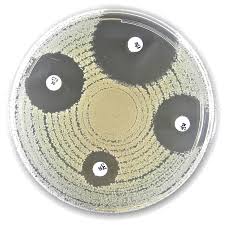Liofilchem® Pefloxacin PEF, Antimicrobial Susceptibility Discs, 5 µg
Catalog No :
CAS Number :
Brand :
In Stock
Specifications:
| Application | Antimicrobial Resistance |
| Storage Temperature | -20°C |
| Product Type | Antibiotic Disc |
| Product Brand | Liofilchem |
| Product Grade | Microbiology grade |
Liofilchem® Pefloxacin (PEF) Antimicrobial Susceptibility Discs (5 µg) are standardized paper discs used for in vitro determination of bacterial susceptibility to pefloxacin, a broad-spectrum fluoroquinolone antibiotic. Each disc is impregnated with 5 micrograms of pefloxacin and is designed for use with the Kirby-Bauer disk diffusion method, particularly in the detection of fluoroquinolone resistance in Enterobacteriaceae, including Escherichia coli and Salmonella spp.
These discs are manufactured under ISO 9001 and ISO 13485 certified quality systems, ensuring high consistency, sterility, and reliability in clinical, food safety, and epidemiological microbiology laboratories.
Key Features
- Accurate potency: Each disc contains precisely 5 µg of pefloxacin to standardize inhibition zone readings.
- Surrogate marker for fluoroquinolone resistance: Used particularly in Salmonella enterica to detect reduced ciprofloxacin susceptibility (per EUCAST guidelines).
- Validated for clinical and surveillance use: Especially important in typhoid fever diagnosis and resistance monitoring.
- CLSI/EUCAST-compatible: Suitable for interpretation according to recognized international standards.
- Sterile and stable: Supplied in sealed cartridges or canisters with desiccant to preserve antibiotic activity.
- Color-coded labeling: Facilitates quick disc identification in high-throughput testing environments.
Applications and Use Cases
1. Clinical Microbiology
- Used in the detection of reduced fluoroquinolone susceptibility in Salmonella typhi, Salmonella paratyphi, and other enteric pathogens.
- AST profiling of Enterobacteriaceae, Staphylococcus spp., and other Gram-negative rods for pefloxacin response.
2. Public Health Surveillance
- Recommended by EUCAST for screening fluoroquinolone resistance in typhoidal and non-typhoidal Salmonella.
- Supports national AMR (antimicrobial resistance) monitoring programs.
3. Food and Water Safety Testing
- Used in identifying resistant Salmonella isolates from foodborne outbreaks and animal reservoirs.
4. Veterinary Diagnostics
- Susceptibility testing in poultry and livestock bacterial isolates related to zoonotic transmission.
Use Instructions
- Medium: Use Mueller-Hinton Agar (MHA) without supplements.
- Inoculum standardization: Prepare bacterial suspension adjusted to 0.5 McFarland standard.
- Inoculation: Evenly spread the inoculum across the agar surface using a sterile swab.
- Disc placement: Place the 5 µg Pefloxacin disc on the inoculated plate using sterile forceps or a disc dispenser.
-
Incubation:
- Temperature: 35 ± 2 °C
- Duration: 16–18 hours under aerobic conditions
-
Result interpretation:
- Measure the diameter of the zone of inhibition.
- Interpret based on EUCAST or CLSI fluoroquinolone resistance screening guidelines.
Technical Specifications
| Specification | Detail |
|---|---|
| Antibiotic | Pefloxacin (PEF) |
| Disc Potency | 5 µg |
| Disc Diameter | 6 mm (standard AST size) |
| Packaging | Cartridges (50 discs) or Canisters (250 discs) |
| Storage Conditions | 2–8 °C, dry, protected from light |
| Shelf Life | 24–36 months from manufacture |
Quality Control
Each production batch is verified with control strains under standardized conditions:
| Organism | Expected Zone Diameter |
|---|---|
| Escherichia coli ATCC® 25922 | Within reference range |
| Salmonella enterica (clinical isolate) | Differentiates reduced fluoroquinolone susceptibility |
Liofilchem® Pefloxacin PEF Discs (5 µg) are critical tools in the detection of fluoroquinolone resistance, particularly in Salmonella spp., supporting the early identification of treatment-resistant typhoid fever and other enteric infections. With their validated performance, international compliance, and high sensitivity, these discs are indispensable for clinical microbiology, antimicrobial resistance surveillance, and food safety applications.




 0
0
